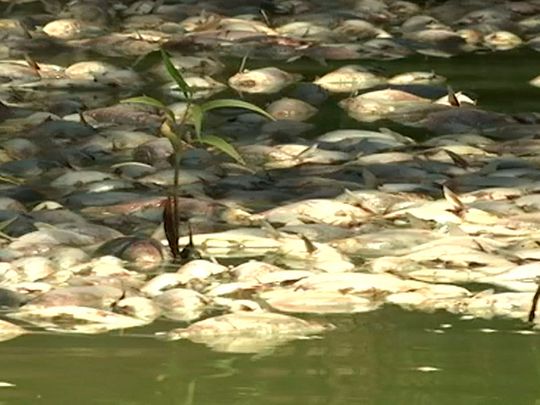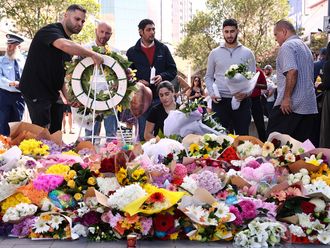
Sydney: This week’s record-smashing heatwave is over for now in Australia’s south-east, but the reprieve will be short-lived as temperatures build up again in the coming days.
A perfect storm, or rather the lack of one, is partly to blame for the extreme temperatures, with neither the northern monsoons nor the southern cool fronts making their usual appearances.
“For pretty much most locations in the southern part of Australia, the heatwave is over,” said the Bureau of Meteorology meteorologist Dean Narramore.
“So it should be a much cooler weekend for many areas, but then we’ll start seeing the heat return at least in Adelaide as we move into Monday, back into the high 30s.
“The rest of South Australia will be much much hotter, getting into the mid 40s probably from around Tuesday.”
Perth is expected to reach 39C to 40C, and the inland area will have temperatures in the low-to-mid 40s, which will then head east.
“We could see widespread low-to-mid 40s for many areas again and possibly some of that heat reaching the [east] coast,” said Narramore.
Melbourne would possibly reach 40C later in the week, he added.
Parts of the country were still hot on Saturday, reaching 42.1C in Bourke, New South Wales, and 42.5C in Birdsville, Queensland.
Temperatures in Menindee, the site of devastating mass fish kills , were hovering a few degrees below 30C after hitting 47C on Wednesday and Thursday.
The Bureau of Meteorology was still analysing the heatwave event , but Narramore said it appeared that the last week had been “one of the biggest and most intense heatwaves we’ve seen in a long time”.
He estimated that at least 20 records had been broken.
Previous climate change analysis by the CSIRO and BoM has found that every part of Australia will see increasingly longer hot spells, rises in average temperature, and more frequent hot days. Australia has warmed by 1C since 1910 and temperatures will continue to climb.
According to the Bureau of Meteorology and the CSIRO , Australia has warmed by 1C since 1910, and temperatures will increase in the future.
So how will climate change affect future heatwaves in Australia?
The CSIRO and BoM have compiled different models for predicting the outcome of climate change in Australia to produce a guide to how different regions will likely be affected .
They found that every part of Australia will continue to experience increases in average temperature, and will have a higher frequency of hot days.
The duration of hot spells will increase in every region. In many areas in the northern half of Australia, the average number of days above 35C could increase by two to three times.
Late in the century, towns such as Darwin, Alice Springs and Broome may experience days with temperatures above 35C for about a third of the year.
These higher temperatures will also result in higher evaporation, which will continue to make drought conditions worse.
Temperature records were broken across the country over the past week, and Australia’s highest ever overnight minimum was recorded in Noona at 39.5C.
In South Australia, Tarcoola and Port Augusta had their hottest days on record (49C and 48.9C respectively), and the NSW town of Tibooburra had its highest minimum temperature on record of 34.2C.
Canberra had four consecutive days above the 40C mark and Broken Hill had three - both for the first time in recorded history.
The already hot central desert region also experienced record heat, although not worse than the last heatwave. Ernabella set a new high at 44.5C.
At midday on Saturday, there were 68 fires burning across NSW with 26 uncontained, the state’s rural fire service said. Fire bans remained in place across parts of the state.
In the Northern Territory, firefighters worked to put out a blaze at Standley Chasm on Friday, which closed roads and several sections of the Larapinta trail.
Northern Territory firefighters battle a blaze at Standley Chasm.
The bureau’s last climate statement noted that December had Australia’s warmest Christmas Day and Boxing Day on record.
Narramore said there were two main reasons for the back-to-back heatwaves.
“One is the very late monsoon, which normally covers northern Australia with clouds and showers, and cools the top of the country down. So the air continues to heat up over weeks and months,” he said.
“The other reason is no strong cold fronts over southern Australia, which would normally flush out the hot air.
“So there’s no relief up north and no relief down south ... we need the monsoon to kick in or a nice front.”
Authorities warned people to stay hydrated and check in on family and neighbours, particularly the elderly, as the heat returned.












